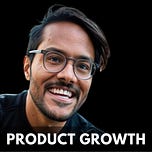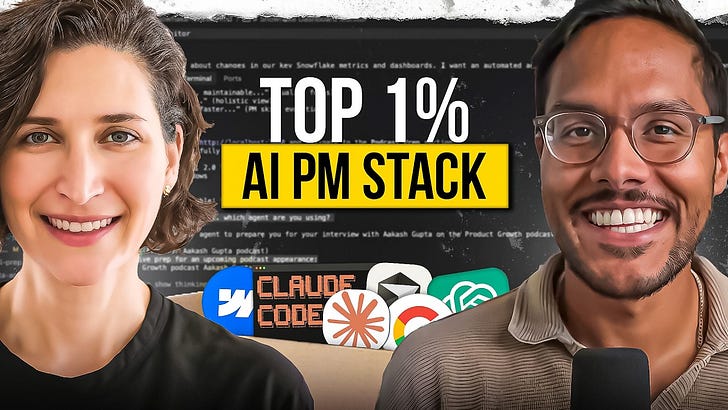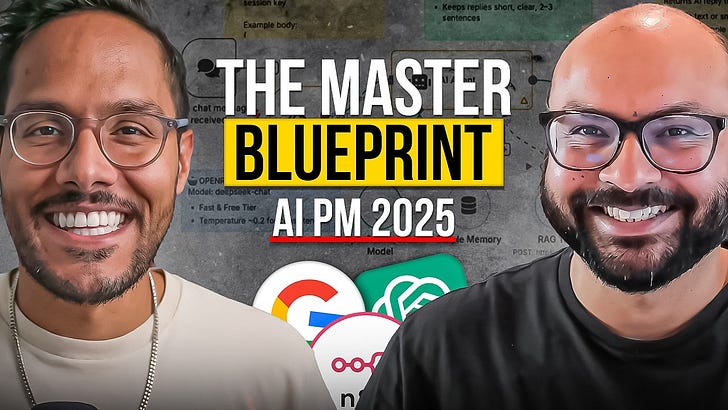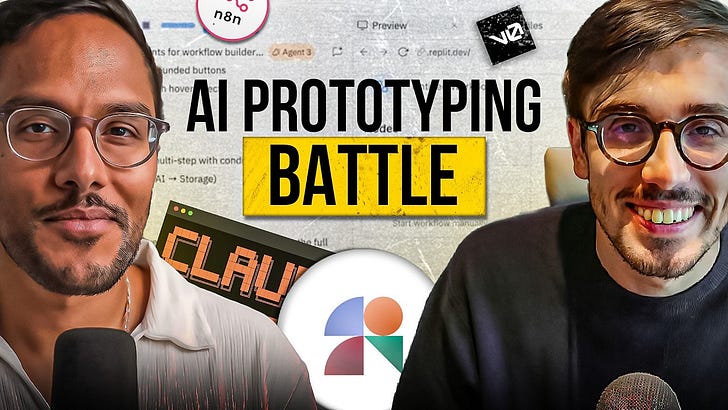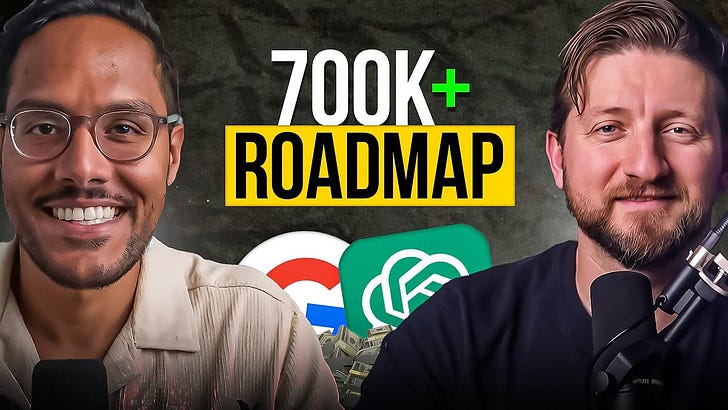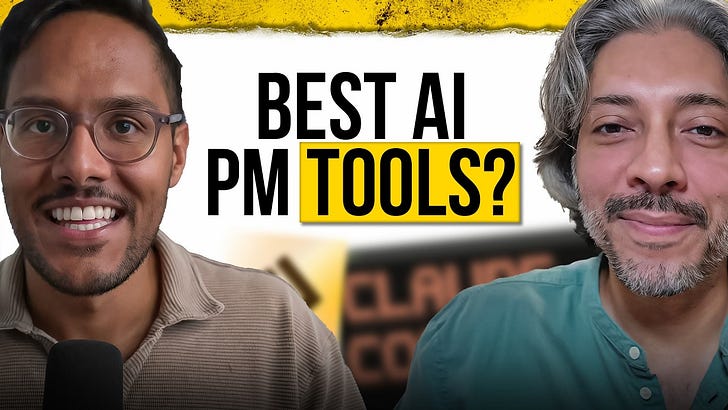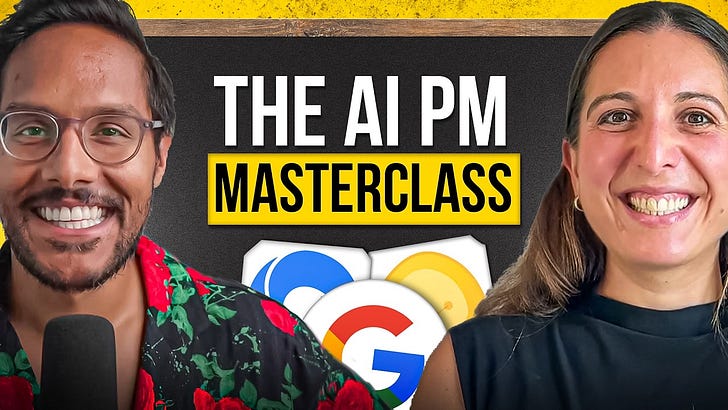Check it out on Apple, Spotify, or YouTube.
Brought to you by:
Amplitude: The market-leader in product analytics
Linear: Plan and build products like the best
Maven: I’ve launched my own curation of their courses
Today’s Episode
This is another episode in our AI PM series.
This time, we’re building an AI employee (Customer Success Agent) that analyzes data, and then takes actions based on it.
Everyone has been talking about agentic workflows, but few actually show how to build them.
Today’s episode is an end-to-end workflow from ex-Leaflink CPO and Siri Head of Product, Harish Mukhami.
You’ll learn:
How to 10x your team without increasing headcount
By building zero-to-production AI employees in hours
Key Takeaways
Building an AI employee just took 62 minutes. Harish demonstrated something that would have seemed impossible two years ago: creating a fully functional customer success agent that analyzes customer data, identifies churn risks, composes personalized emails, and creates Jira tickets—all in the time it takes for a typical product review meeting. Using ChatGPT O3 Mini for planning, Gibson AI for the database backend, Cursor for coding, and Crew AI for agent orchestration, he built a production-ready system that could handle 10,000 users from day one.
The smartest teams will follow a three-stage evolution. Rather than jumping straight to autonomous AI, Harish showed how successful implementation moves through dashboards for insights, then AI recommendations with human approval, finally progressing to full automation. This maturity model lets you build organizational confidence while gradually removing humans from routine tasks. The human-in-the-loop stage is particularly crucial for customer-facing functions where a bad AI decision could damage relationships.
Getting the architecture right upfront saves weeks of technical debt. Using reasoning models like O3 Mini for initial planning—defining data models, dashboard requirements, and business logic—prevents the endless iteration cycles that kill momentum. Harish spent the first portion carefully architecting the database schema and dashboard structure before writing a single line of code. This front-loaded planning approach means your AI systems integrate cleanly with existing tools rather than becoming isolated prototypes.
Production infrastructure is becoming commoditized faster than anyone expected. AI-powered databases now auto-provision development and production environments, generate complete APIs, and handle scaling without any DevOps knowledge. Gibson deployed a production-grade database with full CRUD operations in under three minutes. The infrastructure bottleneck that traditionally blocks non-technical PMs from building real products is disappearing rapidly.
Seamless tool integration through protocols like MCP eliminates context-switching. Model Context Protocol connecting databases directly to code editors means you can manage schemas, run queries, and deploy changes without leaving your development environment. This isn't just about efficiency—it fundamentally changes how AI systems can interact with your entire tech stack through natural language. The ability to prompt your way through complex workflows across multiple tools opens up automation possibilities that were previously impossible.
Multi-agent frameworks make sophisticated automation accessible to semi-technical teams. Crew AI abstracts away the complexity of memory management, tool definitions, and agent chaining that would normally require deep engineering knowledge. You define specialized agents—database queries, churn analysis, mitigation strategies, email delivery—and orchestrate them like managing a human team. Each agent has expertise and hands off work systematically, creating maintainable systems that mirror how your current teams actually operate.
The economics of prevention vs recovery are about to shift dramatically. AI agents that catch at-risk customers before they churn deliver exponentially better ROI than traditional win-back campaigns. Harish's system identified customers with declining usage patterns, unresolved support tickets, and billing issues, then automatically triggered personalized outreach and internal escalations. This proactive approach transforms customer success from reactive firefighting to predictive intervention.
Information workers across all functions should be preparing for automation. The same framework that built a customer success agent applies to SDRs, recruiters, executive assistants, and even product managers. Any role that involves ingesting data, analyzing patterns, and taking action can be automated using these tools. The question facing every team isn't whether this automation will happen, but how quickly you'll adopt it to maintain competitive advantage.
The PM skillset is evolving faster than most realize. Product managers who can architect agent workflows, design human-AI handoffs, and prompt their way through complex system building will have exponential impact compared to those still relying on traditional development cycles. The line between technical and non-technical roles is blurring as natural language becomes the primary interface for building software.
What used to take quarters now happens in hours. The combination of reasoning models for planning, AI-powered infrastructure for deployment, and agent frameworks for automation has compressed the entire product development timeline. Harish proved that with the right tools and approach, you can go from idea to production-ready AI employee in a single afternoon. For product managers managing resource constraints and competing priorities, this represents the most significant productivity shift since the introduction of cloud computing.
Where to Find Harish
LinkedIn: Harish Mukhami
Company: GibsonAI
If you prefer to only get newsletter emails, unsubscribe from podcast emails here.
If you want to advertise, email productgrowthppp at gmail.
Related
Newsletters:
Podcasts:
We Built an AI Agent to Automate PM in 73 mins (ZERO CODING)
We Built an AI Product Manager in 58 mins (Claude, ChatGPT, Loom + Notion AI)
Up Next
I hope you enjoyed the last episode with Jeremy Epling (where we discussed the lessons he learned from working at Microsoft and Vanta). Up next, we have episodes with:
Bret @DesignJoy - Running Solo $2M/yr Design Agency
Thomas Occhino - CPO, Vercel
Aman Khan - AI PM @ Arize AI, Spotify, Cruise
Finally, check out my latest deep dive if you haven’t yet: Career-Launching Companies: These are the Companies You Should Work For
Cheers,
Aakash

